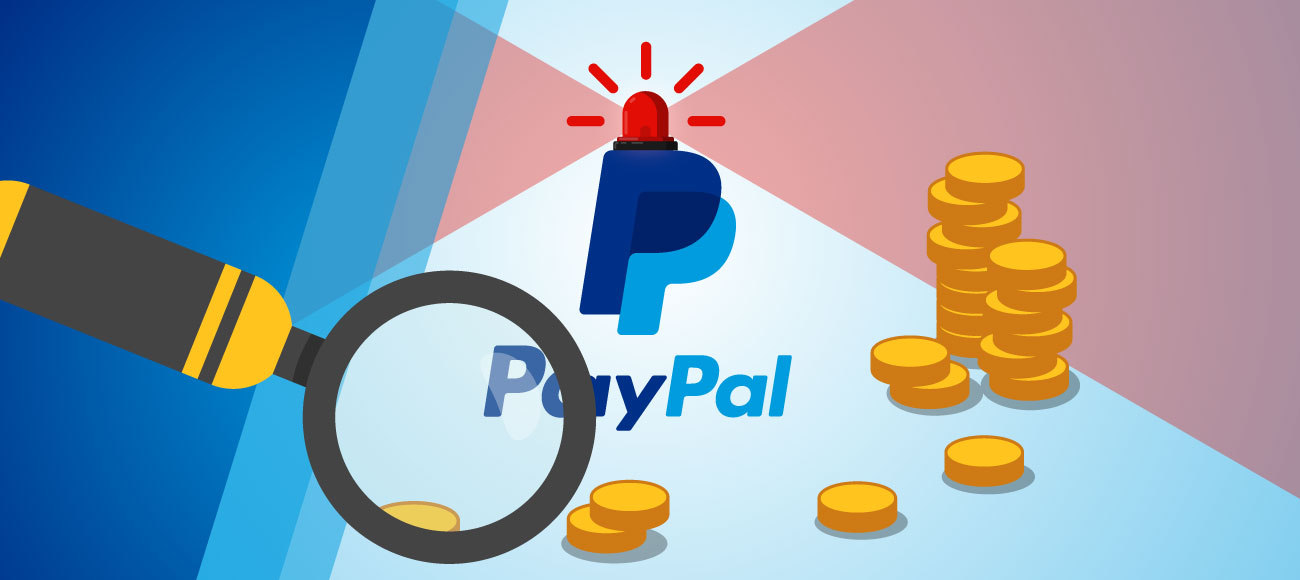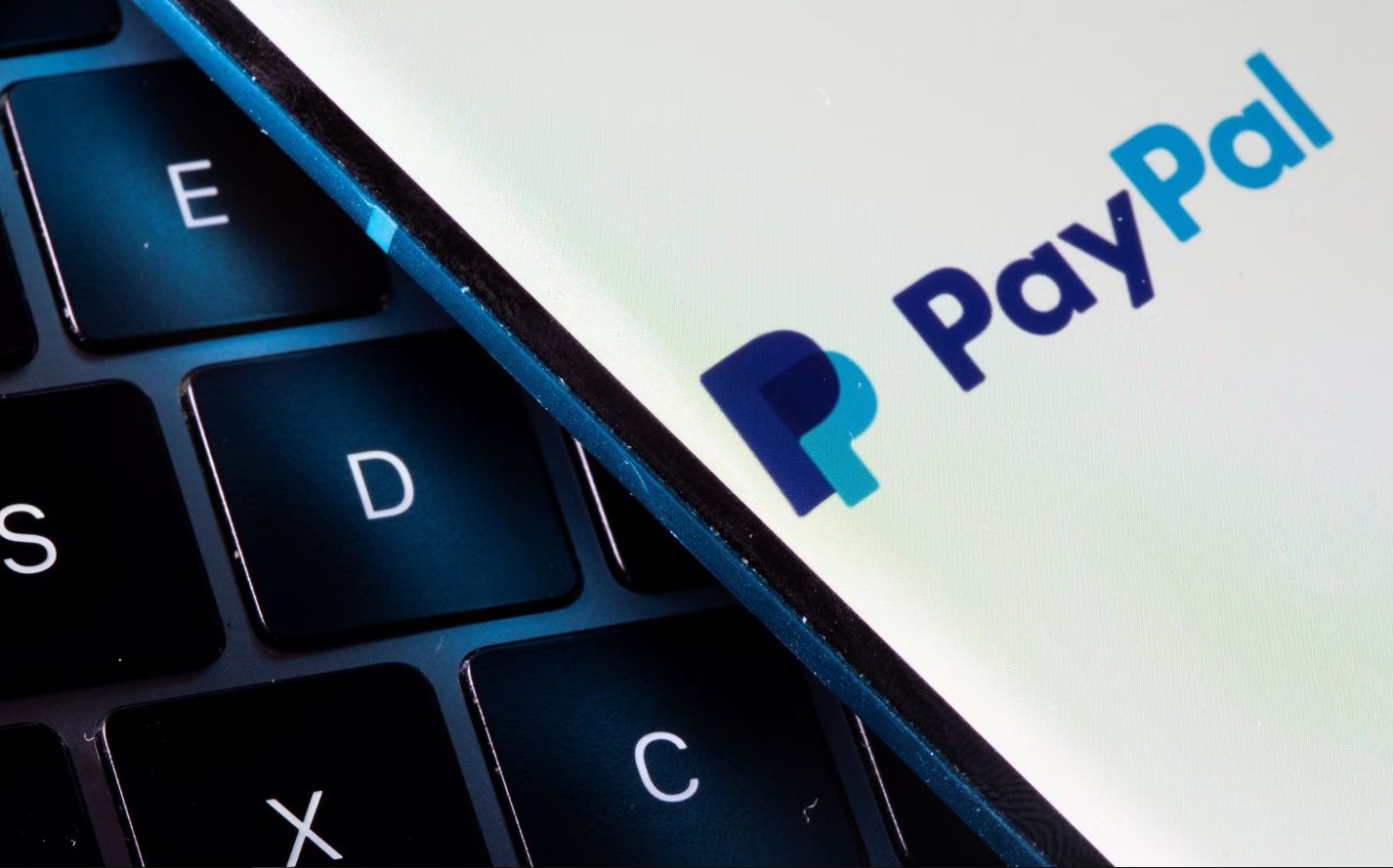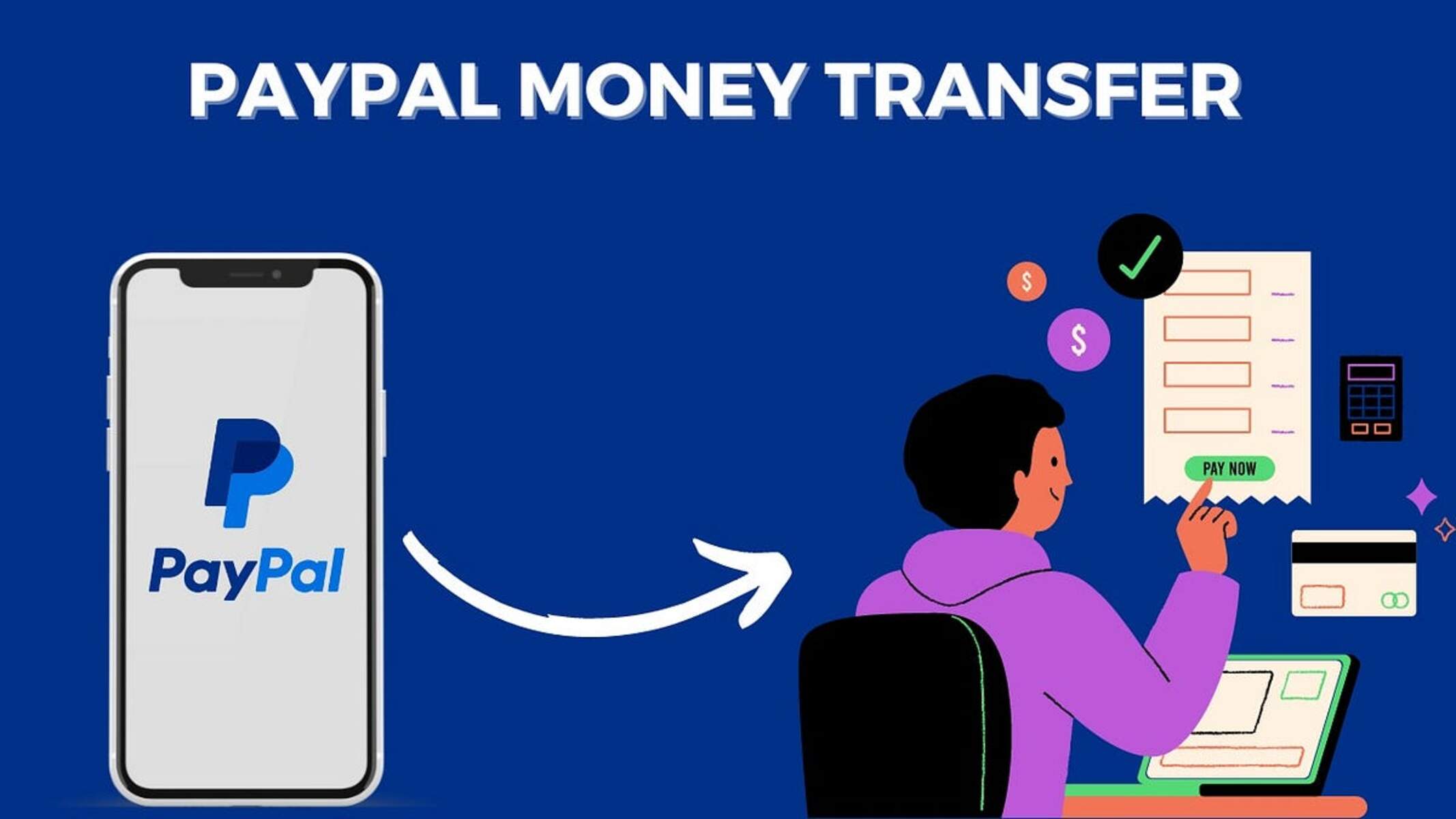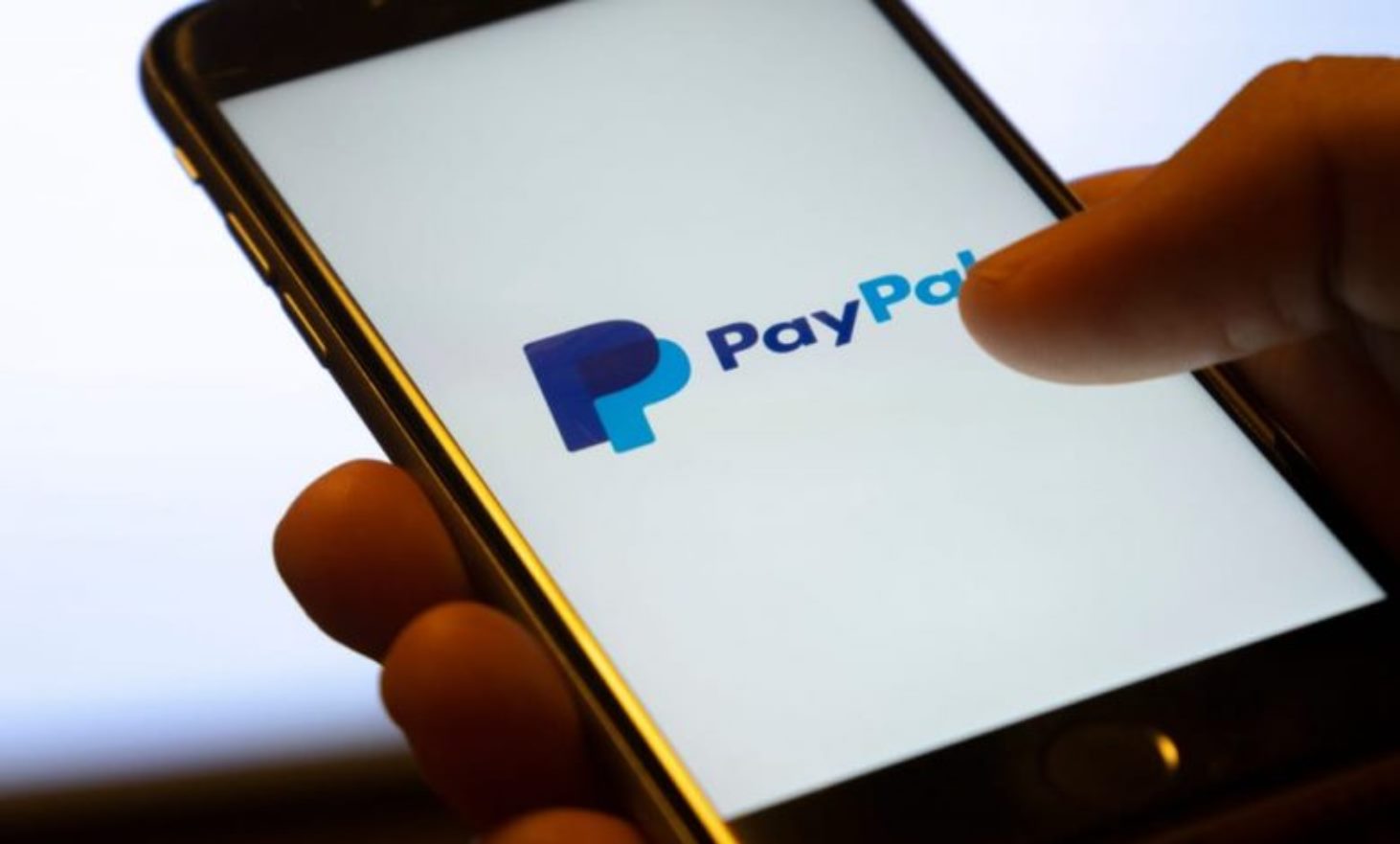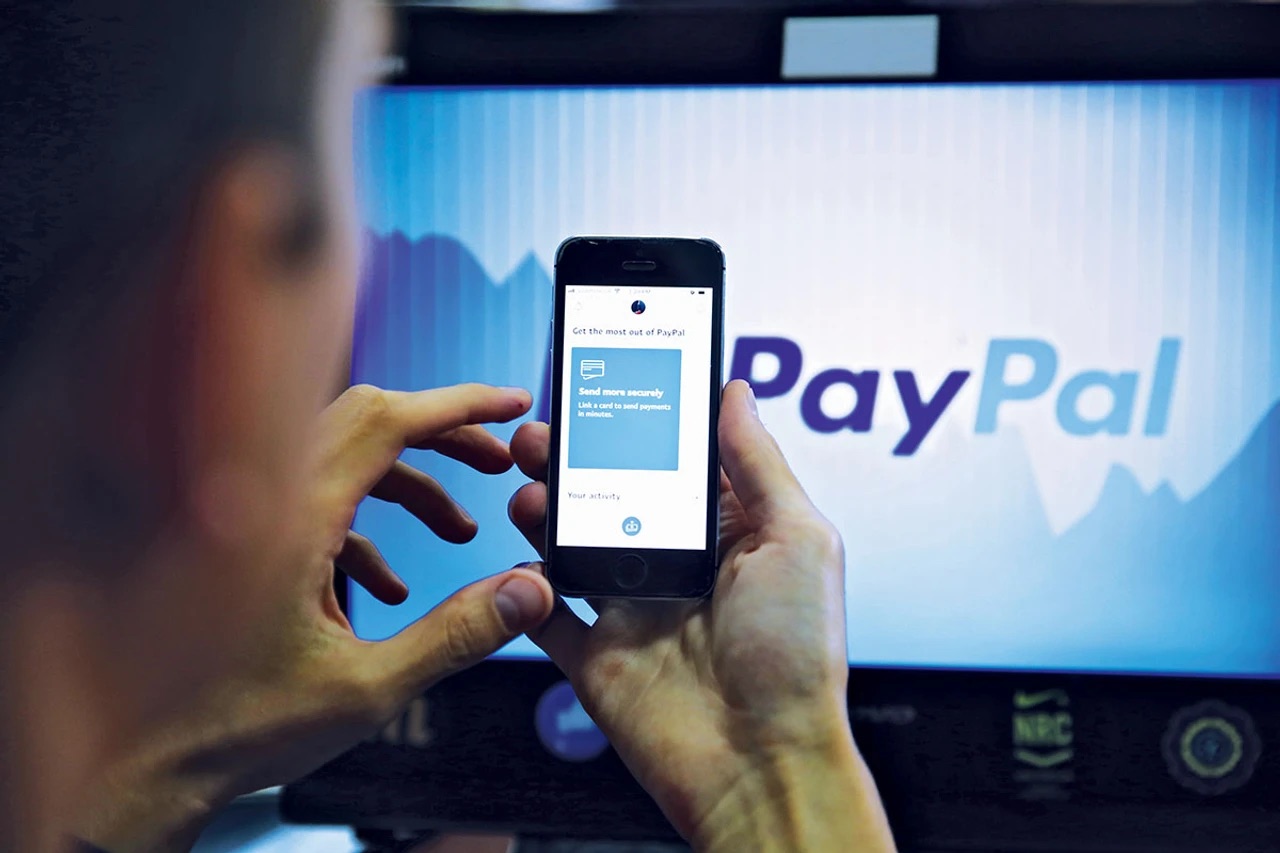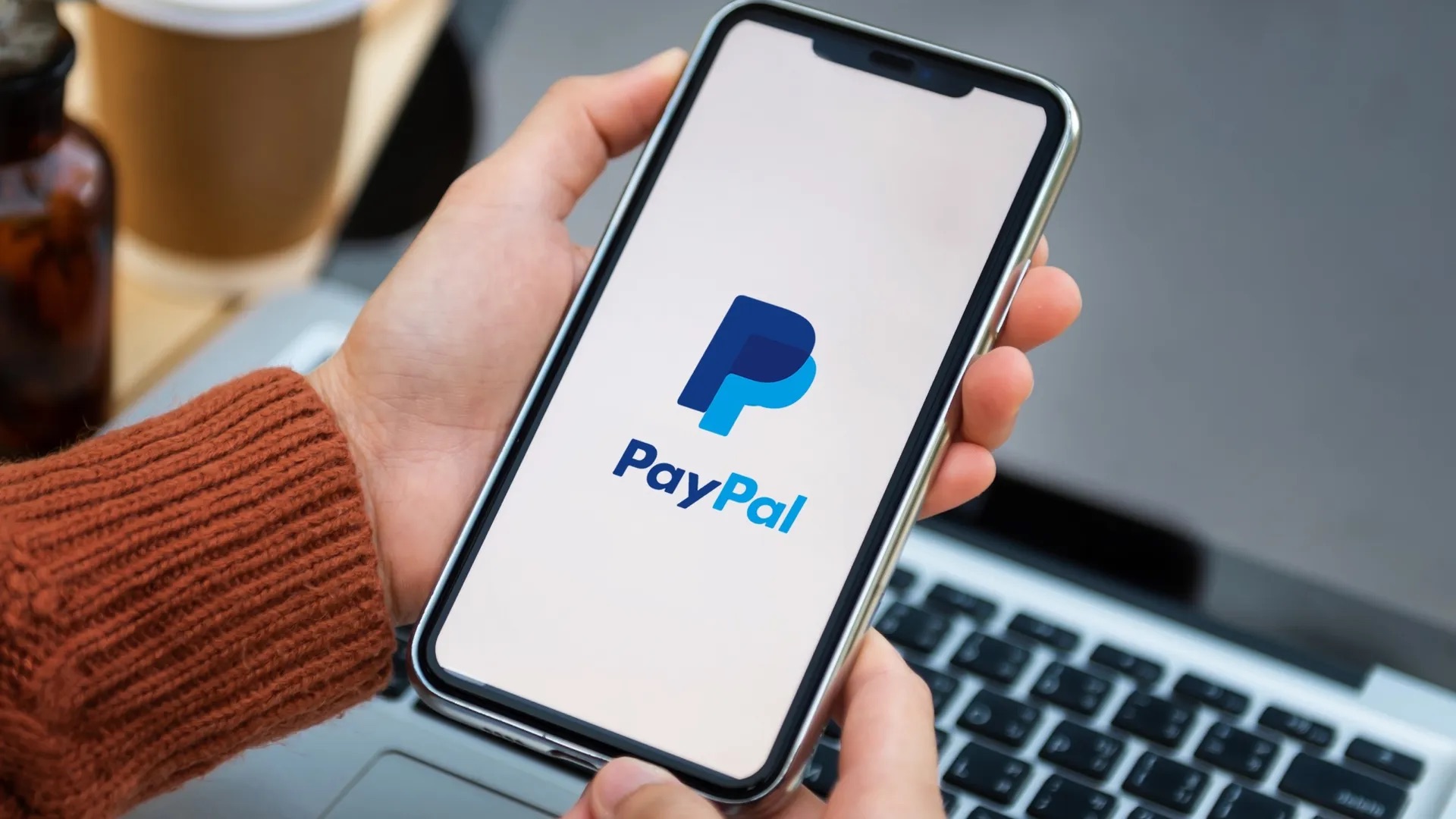Introduction
PayPal is a widely-used online payment platform that allows individuals and businesses to send and receive money securely. While it offers convenience and ease of use, PayPal charges fees for certain transactions, which can eat into your profits or personal funds. Fortunately, there are strategies you can employ to avoid or minimize these fees, ensuring that you get the most out of your PayPal usage.
In this article, we will explore how PayPal fees work and provide you with tips on how to avoid them. Whether you run a small business or simply use PayPal for personal transactions, the information we provide will help you save money and keep more of your hard-earned funds.
Before we delve into the strategies, let’s first understand the different types of PayPal fees that you may encounter:
- Transaction Fees: PayPal charges a percentage of the transaction amount as a fee for receiving payments.
- Currency Conversion Fees: If you receive money in a different currency and need to convert it to your local currency, PayPal applies an additional fee for the currency conversion.
- Withdrawal Fees: If you transfer funds from your PayPal account to your bank account, PayPal may charge a fee for this transaction.
- Additional Fees for Premium Services: PayPal offers additional services such as PayPal Here and PayPal Pro, which come with their own fees.
Now that you have a basic understanding of the fees involved, let’s explore the various strategies you can utilize to avoid or minimize them. By implementing these techniques, you can maximize your savings and enjoy the full benefits of using PayPal without constantly worrying about fees eating into your funds.
Understanding PayPal Fees
Before we dive into the strategies on how to avoid PayPal fees, it’s important to have a clear understanding of how these fees are calculated. By understanding the fee structure, you can make informed decisions and optimize your PayPal transactions. Here are the key aspects to consider:
Transaction Fees:
When you receive payments through PayPal, you will be charged a transaction fee. The fee is typically a percentage of the total transaction amount, plus a fixed fee per transaction. The exact fee percentage and fixed fee amount can vary depending on several factors, including your country, the currency used, and the type of transaction (personal or business).
Currency Conversion Fees:
If you receive payments in a currency different from your PayPal account’s default currency, PayPal will automatically convert the funds for you. However, this convenience comes at a cost. PayPal charges a currency conversion fee, which is typically a percentage of the converted amount. It’s important to note that PayPal’s currency conversion rates may not always be the most competitive, so it’s worth comparing them with other options if you frequently deal with different currencies.
Withdrawal Fees:
When you transfer funds from your PayPal account to your linked bank account, you may be subject to withdrawal fees. These fees vary depending on factors such as the country, the currency, and the withdrawal method used. It’s important to check PayPal’s website or contact their customer support to understand the specific withdrawal fees applicable to your situation.
Additional Fees for Premium Services:
PayPal offers additional services such as PayPal Here, which enables in-person card payments, and PayPal Pro, which provides expanded payment processing capabilities. These premium services come with their own fees, so it’s important to carefully evaluate whether the benefits outweigh the associated costs for your specific needs.
By understanding these different types of fees, you can make informed decisions and take steps to minimize their impact on your PayPal transactions. In the following sections, we will explore practical strategies that can help you avoid or reduce PayPal fees, allowing you to keep more of your money in your pocket.
How to Avoid PayPal Fees
Now that we have a clear understanding of the fees associated with PayPal, let’s explore some effective strategies to avoid or minimize these fees:
- Link Your Bank Account: By linking your bank account to your PayPal account, you can easily transfer funds between the two without incurring any fees. This allows you to bypass the need for costly credit card transactions and withdrawal fees. Additionally, linking your bank account can provide added convenience when it comes to withdrawing funds.
- Receive Payments as “Friends and Family”: When receiving payments from friends, family, or trusted individuals, request that they send the payment as “Friends and Family” instead of as a business transaction. PayPal typically does not charge fees for “Friends and Family” payments within the same country. Just ensure that this option is used only for personal transactions to avoid potential violations of PayPal’s terms.
- Opt for Local Currency Conversion: If you often receive payments in different currencies, consider opting for local currency conversion instead of using PayPal’s automatic conversion. While PayPal’s currency conversion may be convenient, it comes with additional fees. Using a third-party service or a specialized currency exchange platform may offer better exchange rates and lower fees.
- Utilize PayPal Business Account: If you run a business and frequently receive payments, consider upgrading to a PayPal Business account. This account type offers specific features and tools tailored for businesses. By utilizing this account, you may be eligible for lower transaction fees and additional benefits that can help offset potential costs.
- Use Alternative Payment Methods: Depending on your business or personal requirements, explore alternative payment methods that may have lower fees compared to PayPal. While PayPal is widely accepted and convenient, some payment platforms or merchant services might offer more competitive rates. It’s always worth researching and comparing different options to find the best solution for your specific needs.
- Consider PayPal Alternatives: If PayPal fees consistently add up and significantly impact your finances, you may want to consider exploring alternative payment platforms that better suit your requirements. There are several online payment services available, each with its own fee structure and features. Research and compare these alternatives to find the one that aligns with your preferences and offers lower fees.
By employing these strategies, you can effectively reduce or avoid PayPal fees, ensuring that more of your money stays in your pocket. However, it’s essential to periodically review PayPal’s fee structure and terms of service, as they may change over time. Stay informed and adapt your payment methods accordingly.
Link Your Bank Account
One effective strategy to avoid PayPal fees is to link your bank account to your PayPal account. By doing so, you can easily transfer funds between the two without incurring any additional charges. Here’s how linking your bank account can help you save on fees:
No Credit Card Transactions Fees:
When you make a payment or receive a payment through PayPal using a credit card, PayPal charges a transaction fee. This fee is typically a percentage of the transaction amount, plus a fixed fee per transaction. By linking your bank account instead, you can bypass these credit card transaction fees and keep more money in your pocket.
Avoiding Withdrawal Fees:
If you frequently transfer funds from your PayPal account to your bank account, you may be subject to withdrawal fees. These fees can vary depending on factors such as the country, the currency, and the withdrawal method used. By linking your bank account, you can avoid these withdrawal fees altogether and have direct access to your funds.
Convenient Withdrawal:
Linking your bank account also makes the process of withdrawing funds from PayPal more seamless and convenient. Once your bank account is linked, you can easily transfer money from your PayPal account to your bank account with just a few clicks. This eliminates the need for additional intermediaries and the associated fees that may come with them.
To link your bank account to your PayPal account, simply follow these steps:
- Login to your PayPal account.
- Go to your “Wallet” or “Account Settings” section.
- Select “Link a Bank Account” or a similar option.
- Enter the required information, including your bank account number and routing number.
- Confirm and verify your bank account, which may involve linking a debit card for verification purposes or providing other necessary information.
It’s important to note that the verification process may vary depending on your country and the banking system in place. PayPal will guide you through the necessary steps to link your bank account successfully.
Once your bank account is linked, you can start utilizing it for your PayPal transactions. Whether it’s receiving payments or withdrawing funds, you can now do so without incurring any additional fees. Keep in mind that while linking your bank account helps you avoid PayPal transaction and withdrawal fees, it does not exempt you from other fees, such as currency conversion fees or fees associated with premium services.
By linking your bank account to your PayPal account, you can optimize your transactions and keep more of your money. Take advantage of this simple but effective strategy to reduce unnecessary fees and enjoy a seamless PayPal experience.
Receive Payments as “Friends and Family”
Another smart strategy to avoid PayPal fees is to request that your friends, family, or trusted individuals send payments as “Friends and Family” instead of as a business transaction. This option is particularly useful for personal transactions and can help you save on fees. Here’s how it works:
Avoiding Transaction Fees:
When you receive a payment through PayPal as a business transaction, PayPal applies transaction fees. These fees are typically a percentage of the transaction amount, plus a fixed fee per transaction. However, PayPal does not charge fees for “Friends and Family” payments within the same country. By requesting payments as “Friends and Family,” you can circumvent these transaction fees and keep more of your money.
Ensuring Transparency and Trust:
Using the “Friends and Family” option is ideal for transactions among trusted individuals because it signifies personal payments rather than business transactions. It’s essential to use this option only for personal transactions to comply with PayPal’s terms and conditions. Misusing this option for business transactions can result in penalties or the suspension of your PayPal account.
To request a payment as “Friends and Family,” follow these steps:
- Log in to your PayPal account.
- Click on the “Send & Request” or “Money” tab.
- Select the “Send money to friends and family” option.
- Enter the recipient’s email address or select their name from your contacts.
- Specify the payment amount and currency.
- Add an optional note or a reason for the payment.
- Review the payment details and click “Send.”
Remember, it is crucial to use this option only for personal transactions with trusted individuals. Using it for business transactions or attempting to deceive PayPal can lead to account restrictions or other consequences.
However, it’s worth noting that while “Friends and Family” payments can help you avoid transaction fees, they do not exempt you from other fees such as currency conversion fees, withdrawal fees, or fees associated with premium services. It’s important to understand the complete fee structure of PayPal and consider additional strategies to further optimize your transactions.
By requesting payments as “Friends and Family” for personal transactions, you can save on transaction fees and maintain transparency within your PayPal transactions. This strategy can be particularly beneficial when dealing with friends, family, or trusted individuals, allowing you to enjoy the full benefits of PayPal’s services without unnecessary fees.
Opt for Local Currency Conversion
When receiving payments in a different currency through PayPal, opting for local currency conversion can help you minimize currency conversion fees. PayPal offers automatic currency conversion for your convenience, but it often comes with additional fees and less favorable exchange rates. By exploring alternative currency conversion options, you can potentially save money and get more value from your international transactions. Here’s how:
Avoiding PayPal’s Currency Conversion Fees:
PayPal charges a currency conversion fee when you receive money in a currency different from your PayPal account’s default currency. This fee is typically a percentage of the converted amount. However, you have the option to bypass PayPal’s currency conversion and use third-party services or specialized currency exchange platforms instead. These alternatives often offer more competitive exchange rates and lower conversion fees, allowing you to retain more of your funds.
Comparing Exchange Rates:
Before opting for local currency conversion through PayPal or an alternative service, it’s crucial to compare exchange rates. PayPal’s rates may not always be the most favorable, especially for large transactions. Look for reputable currency exchange services or platforms that offer transparent exchange rates and low fees. This way, you can ensure that you are getting the best possible conversion rate and minimizing unnecessary expenses.
Considering Multi-Currency Accounts:
If your PayPal transactions involve frequent payments in multiple currencies, consider utilizing multi-currency accounts provided by some banks or financial institutions. These accounts allow you to hold funds in different currencies and make transactions in those respective currencies. By leveraging a multi-currency account, you can avoid the need for constant currency conversion and potentially save on conversion fees.
To implement local currency conversion, follow these general steps:
- Research reputable third-party currency exchange services or specialized currency exchange platforms.
- Compare their exchange rates and fees with PayPal’s rates.
- Select the option that offers the most favorable rates and lowest fees.
- Register or sign up for the chosen service or platform, following their specific instructions.
- Provide the necessary recipient and payment information, ensuring accurate details.
- Initiate the currency conversion and complete the transaction.
Always exercise caution and choose reputable currency exchange services or platforms to ensure the safety and security of your funds.
While opting for local currency conversion can help you minimize currency conversion fees, it’s important to be aware that other fees may still apply, such as transaction fees or withdrawal fees. Familiarize yourself with PayPal’s fee structure and consider combining currency conversion optimization with other strategies to fully optimize your PayPal transactions.
By taking control of your currency conversions and exploring alternative options, you can potentially reduce fees, get better exchange rates, and maximize the value of your international payments through PayPal.
Utilize PayPal Business Account
If you run a business and frequently receive payments through PayPal, upgrading to a PayPal Business account can provide several benefits, including the potential to lower transaction fees and access to additional features. By utilizing a PayPal Business account, you can optimize your PayPal transactions and save money in the process. Here’s how:
Potential Lower Transaction Fees:
PayPal often offers lower transaction fees for business accounts compared to personal accounts. The exact fee structure may vary depending on factors such as your country and sales volume, but in general, business accounts enjoy more competitive rates. By upgrading to a PayPal Business account, you can take advantage of these reduced transaction fees, ultimately saving money on each payment received.
Access to Additional Features:
PayPal Business accounts come with a range of additional features designed specifically for businesses. These features can help streamline your payment processes, enhance customer experience, and provide valuable insights into your sales and finances. From customizable online invoicing to advanced reporting and analytics, these tools can contribute to overall efficiency and growth while maximizing the benefits of using PayPal.
Improved Branding and Credibility:
By utilizing a PayPal Business account, you can customize your payment experience to align with your brand. This includes adding your business logo, using a branded checkout process, and displaying relevant information to customers during transactions. These branding elements enhance your professionalism and credibility, leading to increased trust and customer satisfaction.
To upgrade to a PayPal Business account, follow these steps:
- Log in to your existing PayPal account.
- Click on the “Upgrade to Business” or similar option.
- Choose the appropriate business type and provide the required details about your business.
- Follow the prompts to complete the upgrade process.
It’s important to note that upgrading to a PayPal Business account may require additional verification and documentation, depending on your country and business structure. PayPal will guide you through the necessary steps to ensure a smooth transition.
By utilizing a PayPal Business account, you can enjoy potential cost savings through lower transaction fees, access to additional features, and enhanced branding for your business. However, it’s essential to review PayPal’s current fee structure and terms of service, as they may change over time. Stay informed and take advantage of the benefits that a PayPal Business account can offer to optimize your business transactions.
Use Alternative Payment Methods
While PayPal is a widely used and convenient payment platform, it may not always be the most cost-effective option. Depending on your business or personal requirements, exploring alternative payment methods can potentially help you reduce fees and optimize your transactions. By considering different payment options, you can choose the one that best suits your needs and offers lower fees. Here are some alternative payment methods to consider:
Direct Bank Transfers:
One of the simplest alternatives to PayPal is to conduct direct bank transfers. By providing your bank account details to clients or customers, they can make payments directly into your bank account. Direct bank transfers often come with lower or no transaction fees, making it a cost-effective option for both parties involved. However, it’s important to ensure the security and legitimacy of the transactions when using this method.
Mobile Payment Apps:
With the rise of mobile technology, various mobile payment apps have emerged as convenient alternatives to traditional payment platforms. Apps like Venmo, Google Pay, or Apple Pay offer features such as peer-to-peer payments and easy integrations with other digital services. These apps often have competitive or even no transaction fees, making them an attractive option for personal or small-scale transactions.
Cryptocurrency Payments:
Cryptocurrencies like Bitcoin and Ethereum have gained popularity as alternative payment methods. While the adoption of cryptocurrencies is still not widespread, they offer benefits such as low transaction fees and enhanced privacy. Some businesses accept cryptocurrencies as a form of payment, providing an opportunity to reduce fees and potentially gain exposure to a growing market.
Merchant Service Providers:
Depending on the nature of your business, utilizing merchant service providers like Stripe, Square, or Braintree can be advantageous. These platforms offer comprehensive payment solutions tailored to businesses, including online and in-person transactions. While they may have their own fee structures, these providers often offer competitive rates and additional features that can help streamline your payment processes.
Wire Transfers:
For large-scale international transactions, wire transfers can be a viable option. While wire transfers may involve fees charged by banks, they can sometimes be more cost-effective than PayPal’s currency conversion and international transaction fees. Wire transfers are particularly suitable for high-value transactions where speed and security are paramount.
When considering alternative payment methods, it’s essential to evaluate the specific needs of your business or personal transactions. Compare the fees, features, and convenience of different payment options to find the one that aligns best with your requirements. It’s also crucial to ensure the security and reliability of any alternative payment method you choose.
By exploring and utilizing alternative payment methods, you can potentially reduce fees, enjoy competitive rates, and optimize your transactions. Stay informed about new payment technologies and platforms, as the landscape continuously evolves, providing you with more choices and opportunities to save on fees.
Consider PayPal Alternatives
While PayPal is a popular and widely-used payment platform, it’s important to remember that there are several alternatives available in the market. Exploring these alternatives can help you find a solution that better aligns with your specific needs and potentially offers lower fees. Here are some PayPal alternatives to consider:
Stripe:
Stripe is a popular online payment processing platform that caters to businesses of all sizes. It offers a range of features, including easy integration with websites or mobile apps, recurring billing, and customizable payment forms. Stripe provides competitive transaction fees and supports various payment methods, making it an attractive option for e-commerce businesses.
Square:
Square is a versatile payment platform known for its point-of-sale solutions and online payment processing capabilities. It offers easy-to-use hardware options like card readers and registers, making it suitable for both in-person and online transactions. Square’s fee structure is transparent, and it provides useful features such as inventory management and sales analytics.
Braintree:
Braintree, a subsidiary of PayPal, offers payment processing solutions similar to its parent company. It supports multiple payment methods, including credit cards, PayPal, and alternative payment options. Braintree’s fee structure is competitive, and it provides features like fraud protection and recurring billing, making it an appealing choice for businesses wanting a robust payment processing solution.
Authorize.Net:
Authorize.Net is a long-established payment gateway that enables businesses to accept credit card and electronic check payments. It offers features such as simple integration, customizable payment forms, and anti-fraud tools. authorize.Net charges transaction fees, but the rates are competitive and can be negotiated based on the business volume.
Amazon Pay:
For businesses operating on Amazon or catering to Amazon customers, Amazon Pay can be a suitable alternative to PayPal. It allows customers to use their Amazon accounts to make purchases on external websites, providing a familiar and trusted payment method. Fees for Amazon Pay vary depending on the transaction volume and can be competitive for businesses with high sales on the Amazon platform.
Google Pay and Apple Pay:
Both Google Pay and Apple Pay offer convenient and secure payment options for mobile users. They allow customers to make payments using their mobile devices, providing a simplified checkout experience. While fees may apply for certain transactions, Google Pay and Apple Pay can be attractive for businesses targeting mobile consumers.
When considering PayPal alternatives, it’s important to evaluate factors such as transaction fees, features, ease of integration, customer support, and the specific requirements of your business. Also, consider the popularity and acceptance of the alternative payment method among your target audience.
By exploring and considering PayPal alternatives, you can potentially identify a payment solution that better aligns with your needs and offers competitive fees. Remember to thoroughly research each alternative and take advantage of trial periods or demonstrations provided by the payment providers to determine the best fit for your business or personal transactions.
Conclusion
In conclusion, PayPal is a widely-used online payment platform that offers convenience and security for individuals and businesses alike. However, understanding and managing the associated fees is crucial for optimizing your PayPal usage and maximizing your savings.
We have explored various strategies to avoid PayPal fees, including linking your bank account to bypass credit card transaction and withdrawal fees, receiving payments as “Friends and Family” for personal transactions, opting for local currency conversion to minimize conversion fees, utilizing a PayPal Business account for potential lower transaction fees and additional features, considering alternative payment methods to find lower-cost options, and exploring PayPal alternatives to identify payment platforms that better align with your specific needs and potentially offer competitive fees.
It’s essential to remember that PayPal’s fee structure, terms, and services can evolve over time. Staying informed about any changes can help you adapt your payment methods and continue optimizing your transactions.
When implementing these strategies, strike a balance between minimizing fees and meeting your business or personal requirements. Always prioritize security, reliability, and compliance with PayPal’s terms and conditions to ensure a smooth payment experience.
We encourage you to carefully evaluate your own circumstances and preferences when deciding on the best approach to avoid PayPal fees. Each individual or business is unique, and what works best for one may not work as effectively for another.
By applying the strategies outlined in this article and considering alternative payment methods, you can optimize your PayPal transactions, reduce fees, and maximize your savings. Remember to regularly review and reassess your payment methods to adapt to changes and take advantage of new opportunities for better cost-efficiency.









